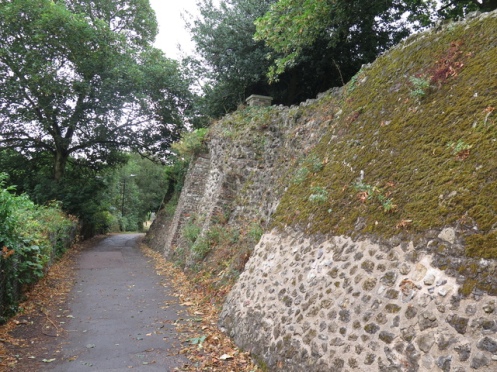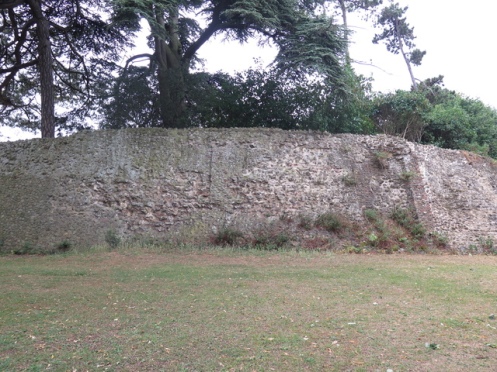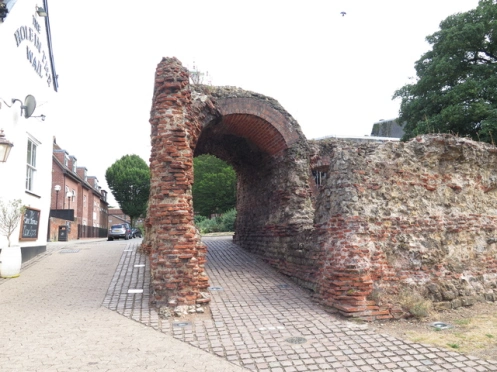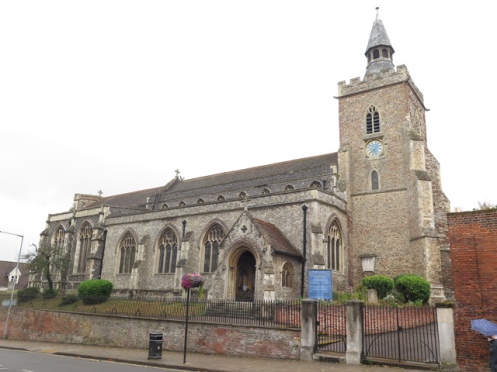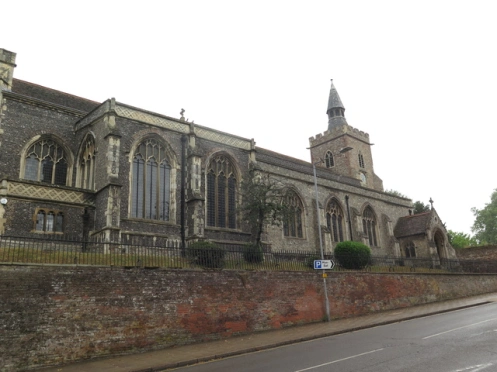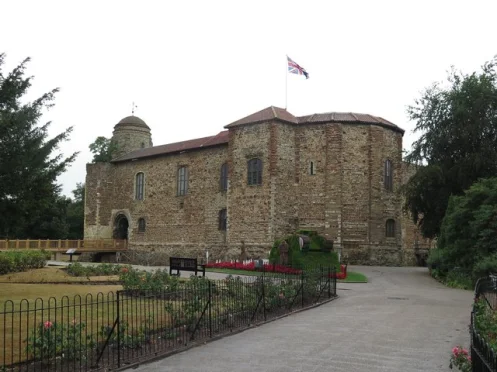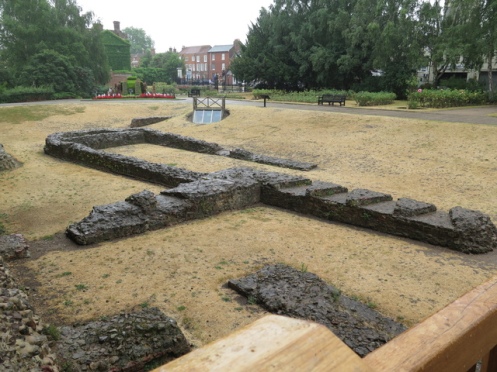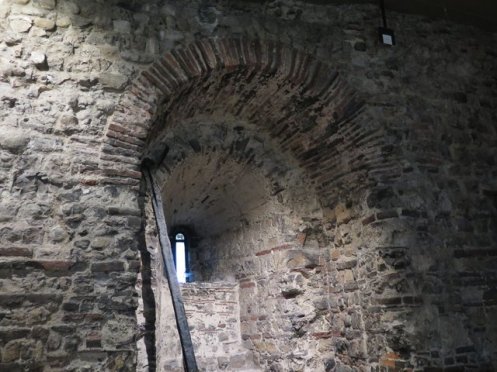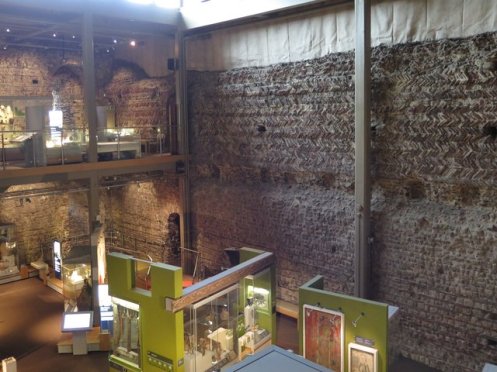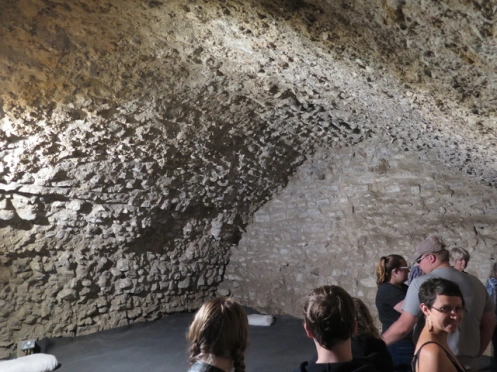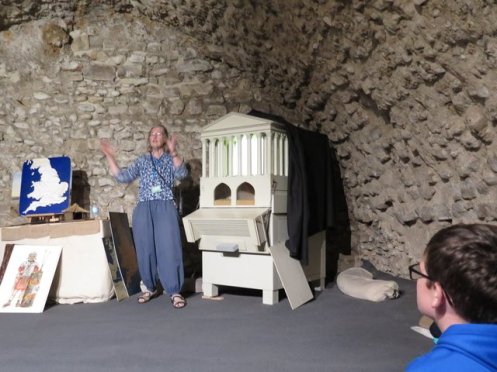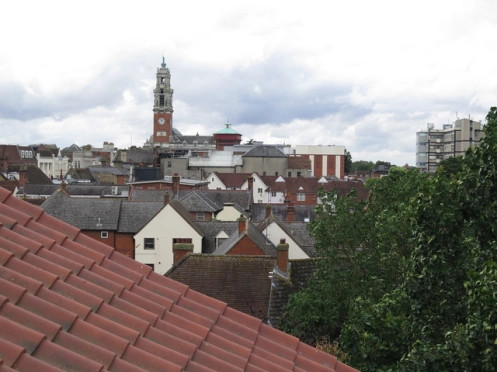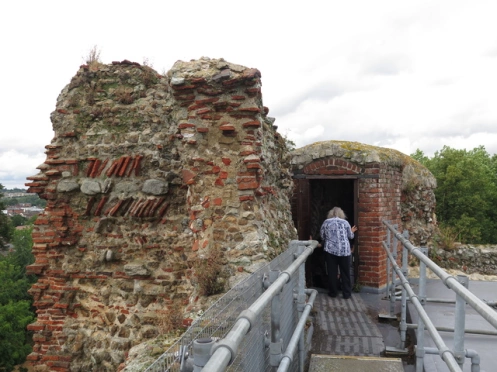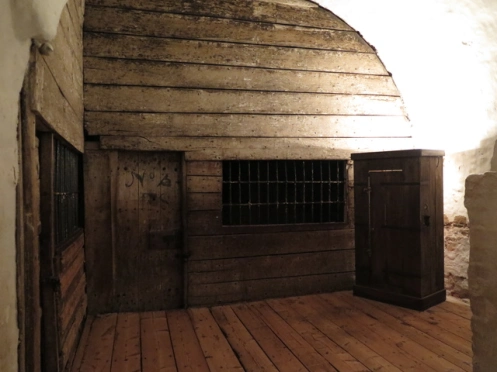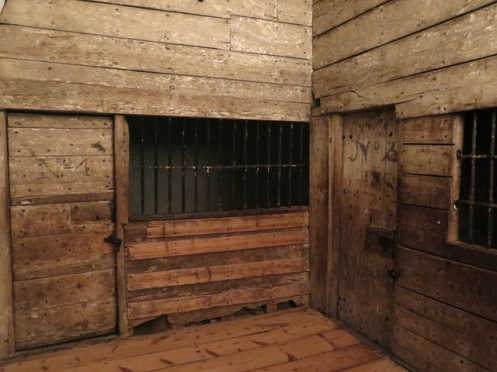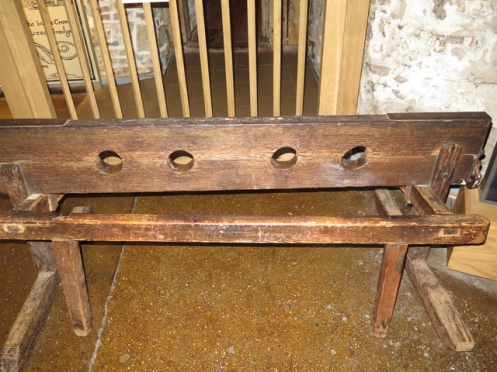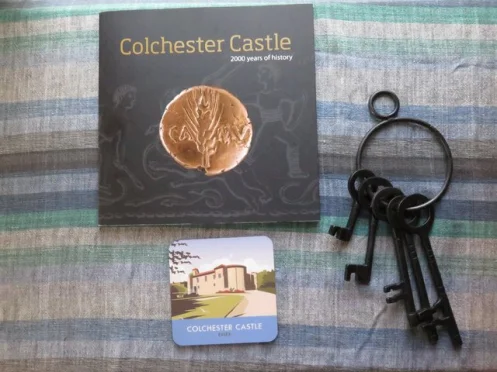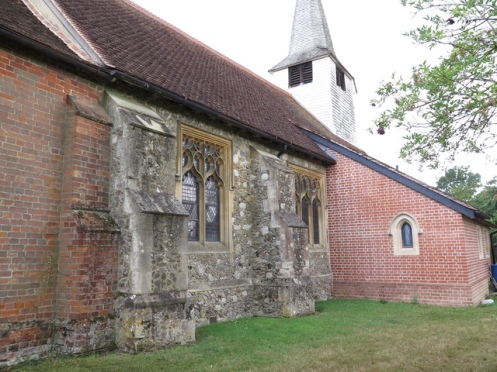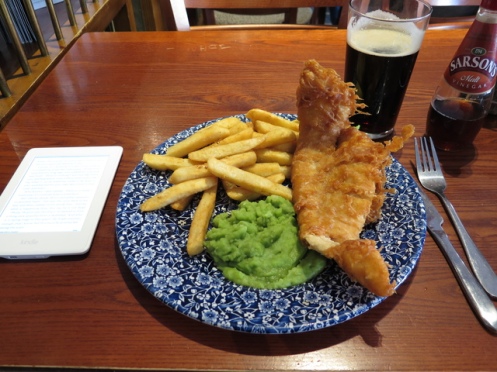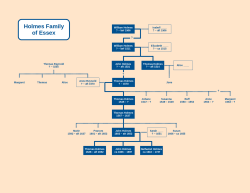
I’m uploading a few charts I’ve drawn. The first, a slightly reformatted version of one I put in the previous post, summarizes what we know or surmise about John Holmes’s family in Essex, going back through his three Thomas ancestors and on, somewhat more speculatively, to John of Ramsden Bellhouse and his parents, William and Elizabeth, and William’s possible parents, William and Isabell. The Holmes men are in solid blue boxes, their wives are in outlined boxes, and other relatives including John’s earliest definite ancestor, Thomas Reynolds, are shown with no boxes. Click to enlarge.
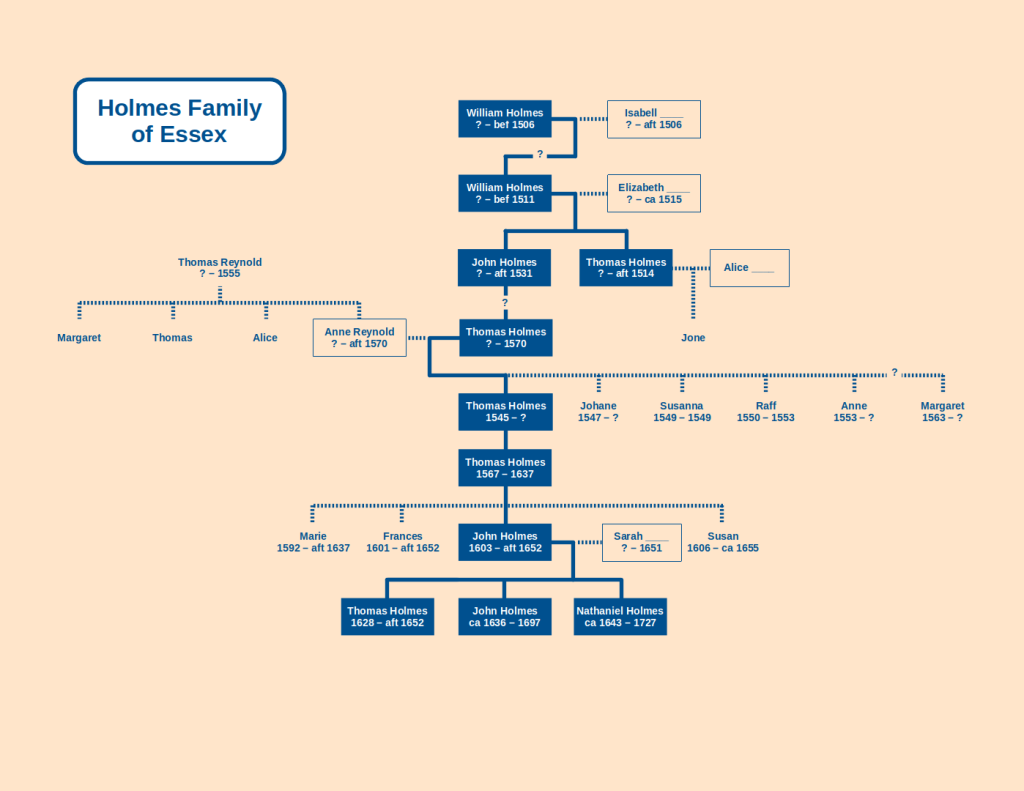
Denwood Holmes wrote me to let me know his new article, “A Black Sheep Redux: The Further Essex Ancestry of John Holmes, Gentleman, Messenger of the Plymouth Court”, has just been published in The New England Historical and Genealogical Register 173 (Fall 2019):1–9. This is a followup to his earlier article mentioned here, filling in more about my Holmes ancestors in Colchester and Ramsden Bellhouse, Essex. It’s great to see this finally in print. I’ve hesitated to say a lot about the subject before Denwood got it published, since the research is pretty much entirely his.
Denwood originally was going to write a single article, but the editor wanted it split into two. I was rather surprised said editor wanted the discussion of the will of Priscilla Stephens held for the second article, because to me that will is what clinched the argument that John Holmes, son of Thomas Holmes the maltster of Colchester and John Holmes of Plymouth were one and the same. Priscilla was born Priscilla Middleton, daughter of Robert Middleton and Margaret Reynold; Margaret’s sister, Ann, was wife of the Thomas Holmes who came to Colchester from Ramsden Bellhouse in the 1530s or 1540s. Priscilla must have been quite old when she wrote her will in 1626 in which she makes a bequest to “My old cousin Holmes his wife”. That “old cousin” is presumably Thomas the son of Thomas and Ann, and since the bequest is to his wife this probably means he’d died by then. This is the only evidence we have regarding his death date. In the same will “my cousin Thomas Mott and my cousin Thomas Holmes” are named overseers of her estate, and here she must be talking about Thomas the maltster, father of John, who was of course still living at that point. Thomas Mott was Priscilla’s nephew (“cousin” in the archaic sense of any relative more distant than immediate family), son of Robert Mott and Priscilla’s sister Anne Middleton.
She mentions numerous other Motts as well, and “My cousin Shirley and his wife”, that being James Sherley and Mary Mott (daughter of Thomas’s brother William) — and that’s the interesting part, because James Sherley was one of the financial backers of the Plymouth colony, and when questions arose regarding his donation of cattle to the colony, who corresponded with Sherley to clarify his intentions? John Holmes of Plymouth, who was, if he was the same man as John of Colchester, Mary’s third cousin.
The other interesting set of documents discussed in the article are records from the manor house of Downham Hall, the next village over from Ramsden Bellhouse, for the time period 1503–1521 and 1537-1555. The Holme(s) surname crops up several times and it looks as though we have the following:
There were two men named William Holme(s). One, who had died by 1506, had a wife named Isabell and was a tenant at Giffords, probably the same property as one of that name held by Sir Edward Tyrell at the time of his death in 1442 and likely inherited first by Edward’s nephew Thomas and then by Thomas’s son Humphrey, whose name appears alongside William Holme in the fine of 1499. The other seemingly was alive in 1509 but dead by 1511 leaving a widow, Elizabeth, and he’s referred to as William Holmes of Ramsden Bellhouse. My inference is that he was the one who acquired the property in 1499, and it seems an attractive speculation that he was son of William of Giffords. The Downham records show William and Elizabeth had a son John, who likely is the same man referred to in the 1514 will of Thomas Holme of Ramsden Bellhouse as his brother, and in several court records as a defendant in suits for debt, where he’s described as a tailor. In one of these suits the creditor was Michael Dormer. John inherited property in both Ramsden Bellhouse and Downham. Interesting, then, that the Thomas Holmes who went to Colchester was a tailor, and that he sold property in Downham, Ramsden Bellhouse, and Ramsden Crays to John Dormer, son of Michael Dormer. This seems to strongly suggest Thomas was John’s son. Unfortunately there aren’t any documents known (yet) that tell us anything about John’s wife or children, if any.
Hence the question marks in this chart:
We don’t know where either William Holme(s) came from. Perhaps they became connected with the Tyrell family as a result of the London inquisition post mortem for Sir Edward, where one of the jurors was the grocer Thomas Holme. Perhaps the early 16th century partnership between John Helion and William Holmes of Great Waldingfield, Suffolk was indicative of a more general Helion-Holmes relationship in that area, and some Holmes accompanied Isabel Helion when she married Humphrey Tyrell, and became their tenant farmer. Or perhaps neither; both scenarios are entirely speculative. So far nothing concrete’s turned up, but there are always more records to look at.
Well, no wonder I could never find Benjamin Franklin Currier and his family in the 1875 New York State census! Here they are, right in Nassau, Rensselaer, New York where they belong: The census taker apparently completely misunderstood that “Franklin” was the guy’s middle name and not his and his family’s surname. I like how No Name is 2/365 years old though.
The census taker apparently completely misunderstood that “Franklin” was the guy’s middle name and not his and his family’s surname. I like how No Name is 2/365 years old though.
But this record clears up (kind of) a bit of confusion. All the records from his son the young Benjamin Franklin Currier’s adulthood say he was born in New Jersey, yet his siblings all were said to have been born in New York and in the 1880 census it says young Benjamin was born in New York too. So I thought maybe he’d somehow gotten the idea into his own head he’d been born in New Jersey, but was wrong.
This census, though, says he was born in New Jersey with his immediate siblings born in Rensselaer County, New York. So it appears the 1880 census is wrong and the later documents are right.
Of course it’d help to check the 1870 census. If the family could be found in it. I can’t find it. I’ve tried searching from every angle I can think of, Currier or Courier or Franklin or no surname at all and just look for families with a Loella and a Benjamin, in New York and New Jersey and New Hampshire, and they just don’t come to light.
Nor can I find them in the 1865 New York census. But maybe they were in New Jersey then.
In the 1860 census they’re in Pittstown, Rensselaer, New York, and the elder Benjamin is indexed as Benjamin F. C. Currin; looks like the name actually written was Benjamin F. C. Currier. The C initial is another mistake.
I had found the family already in 1880, indexed under the surname “Courier”.
Good effort, guys. Participation trophies for everyone.
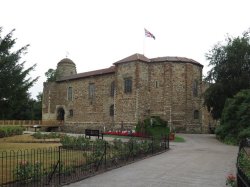
Two years ago, during the American Travelling Morrice’s Cape Ann (Massachusetts) tour, I took an afternoon to visit Plymouth, adopted home of John Holmes and birthplace of Nathaniel, Elisha, Elisha, and Samuel; coming home from that tour I swung through Montville, CT, where Samuel settled and presumably where Nathan and Hiram were born.
This year’s ATM was in Derbyshire, UK, and by delaying my return a few days I was able to extend the list of ancestral Holmes home towns I’ve visited.
Sunday I rode trains on my first class rail pass from Hathersage to Manchester to London Euston, took the Underground and walked to Liverpool Street, and took the train to Colchester, adopted home of one ancestral Thomas Holmes (the tailor) and birthplace of two more plus John.
Once established in my room I walked into Colchester’s city center. Dinner at the Victoria pub, then I pressed on to Colchester Castle, the twelfth century edifice which for many years was used as the Essex County gaol (jail, for us Americans). Gaolkeeper from 1624 until his death in 1637: the third Thomas Holmes, the maltster, father of John, my ancestor. The castle is now a museum. It was closed by that time of day, of course, but I walked around it, then went back to my room.
Monday was quite a day of walking. I logged just under 14 miles on the pedometer.
I walked into town, getting a convenience store breakfast on the way. First destination was St. James’s church, though not neglecting to inspect the Roman wall along the way.
St James’s is where John Holmes was baptized in 1603 and I’d hoped to get inside it. Not only did I not, I didn’t even get into the churchyard; the gate was closed and locked. Oh well.
Next the castle.
I was in it about three hours including a tour of the Roman vaults (the castle was built on the foundations of a Roman temple dating to about 40 AD)
and the roof.
The prison exhibition was in a part added in the 1700s so unknown to Thomas Holmes,
but a nearby room was called out as having been used as gaol space in the 1600s.
Also this quote was displayed:
Sheesh. Never meet your ancestors. 1631 was, as indicated above, right in the middle of Thomas Holmes’s tenure. I was unfamiliar with this report but it’s in the Essex Records Office (T/A 418/108/10). Evidently its recommendations (including putting the gaol in the middle of the county and appointing an “honest gaoler”) were not implemented in full, if at all.
I hit the shop and bought a booklet on the castle, a coaster depicting it, and a set of “dungeon keys”. The latter I would guess are mass produced generic decor items which you can probably find on Amazon or eBay at half the price but I couldn’t resist.
I had lunch (McD’s, worst meal of the trip) and walked back to the train station to begin the next adventure. Took trains to Wickford. Walked to Ramsden Bellhouse, about 2.6 miles.
Ramsden Bellhouse was the birthplace of John’s great grandfather Thomas, the tailor, who moved to Colchester, and home of Thomas’s likely father John Holme(s). William Holme, possibly that John’s father, bought property there in 1499.
The old church there, St. Mary’s, like St. James’s in Colchester, was closed, but it was not fenced in. (Had I done more homework I’d’ve known the church is open for visitors on Saturdays, but getting there on a Saturday would not have fit with my travel schedule anyway.) I hardly expected any of the gravestones to date from the 16th century but was surprised to discover most of them, even ones that by style and decrepitude I expected to be a couple hundred years old, were 20th century. In fact most of the visible stones are in an expansion of the cemetery that was made in 1913. The older section is estimated to have been used for more than 5000 burials over the centuries but there are few stones. About five older stones are close to the church and the one least illegible seemed to date to 1720. Anyway, no Holmeses I noticed.
There was a church here in 1281 and probably in 1066. The west end of the church including the tower and west door date from the 15th century, the nave and chancel roofs are 15th and 16th century, and the south porch is 14th or 15th century with 20th century restorations. (See British Listed Buildings page.) So much of what’s seen here would be familiar to Thomas the tailor.
Aside from St. Mary’s I didn’t see anything of obvious antiquity along the main road. Maybe some houses had old bones but most were clearly modern. The village site doesn’t seem to indicate there is much else of note from pre 20th century, other than an Elizabethan manor.
I walked on past the Fox and Hounds pub, which didn’t seem very promising as a resting place, and pushed on to Ramsden Heath, about 1.3 miles north of Ramsden Bellhouse. The White Horse looked better but turned out to have nothing of interest on tap.
The plan had been to retrace my steps to Wickford, but the plan hadn’t been to go as far as Ramsden Heath, and I realized from there the walk to Billiricay was shorter, about 3 miles. Theoretically I could have taken a bus to one or the other (and from, for that matter) but I felt like walking and not like coping with that mystery, so I headed west. I got there about 6:00, had dinner at the Blue Boar,
and then rode the trains back to Colchester and walked to my room for the night. Next day I went to Manchester, and on Wednesday flew home.
While writing the last post I discovered this:
Ysearch, the free, public genetic-genealogy database, is no longer accessible as a result of the EU General Data Protection Regulation (GDPR) that went into effect on May 25th 2018.
Great.
Rather abruptly, I find I’ve become the (sole) administrator for the Holmes DNA Project at Family Tree DNA.
Last month, the person who’s long been the administrator and who maintained a website for the project on his own server sent out a letter explaining that, due to policy changes at ftdna, that web site had been closed down and would be replaced by one at ftdna. He also asked if anyone would be interested in becoming an administrator for the project. I responded asking for more information, under the impression he was talking about adding administrators, not replacing himself.
However, he left the position last weekend. I wrote to ftdna offering to become the new administrator and was accepted.
So there I am.
There’s a bit of a learning curve. Working on that. I’ve put the anonymized test results back online. Other than that, maintaining the status quo for now.
I’ve let it be known I’d welcome additional administrators for the project; no takers yet.
The project has 201 members now. I’d like to see more. Holmes is a pretty common name; we should have more people testing and willing to share results than that.

I’ve finally gotten around to turning my web pages about Nathan Holmes into an actual document, with source citations. Nothing that would ever be mistaken for a professional article or anything, but at least it’s something that can be printed, handed off to Luddites, stuck in a safety deposit box for five hundred years, whatever, and it has some indication where to find the evidence supporting the story (though, perhaps, you’ll have to check different repositories five hundred years from now). I expect to continue tweaking this document until I’m too dead to work on it any more but it’s available in its current form, in PDF format, at https://tinyurl.com/NathanHolmesHamilton, which should redirect to https://drive.google.com/file/d/1NH28VuQWaVQ3xfAtryM9Dp92AyvpgAw6/view?usp=sharing.
Hm. I got the idea of doing some searching for Ham[m]ond[e] in the AALT indexes and found a couple sort of interesting entries:
From 1510:
| Side | Image | County | Pleas | Plaintiffs | Defendants |
| f | 887 | Essex | common recovery | Meyny, John, gent; Strangman, John, senior; Hern, John; Edmond, John; Purfotte, Thomas; Baker, Thomas | Hamond, Reginald, gent |
That’s presumably our man Reggie right there in the Defendants column. “Common recovery” is the term for a hilariously underhanded way to get around an entail on a property (that is, its automatic passing by operation of law to an heir pre-determined by the settlement deed). As explained on Wikipedia:
As a preliminary, there needed to be a conveyance of the land. The owner (in tail) of the land A conveyed it to someone else B (known as the tenant in precipe) to the intent that a third person C (known as the demandant) might sue for it. C accordingly issued a writ against B. In court, B defended his right saying (correctly) that he had acquired it from A. A (now called the vouchee) was called upon to vouch for his right to the land. He alleged that he had acquired it from D (a person known as the common vouchee). D asked for time and failed to appear subsequently; alternatively, he dashed out of the court. In either case, the judgment was that C should recover the land, and that D should compensate B with land of equal value. However, D was chosen because he was a ‘man of straw‘ with no property at all, so that the judgment against him was valueless, and it was never enforced. The result was thus that C recovered land in fee simple, which A had owned in only fee tail; thus, the entail was barred.
And from 1536:
| Side | Image | County | Pleas | Plaintiffs | Defendants |
| f | 2643 | London | debt | de Vere, Elizabeth, Countess of Oxford | Hamond, Brisingham, of Parva Regn, Essex, gent |
Plaintiff Elizabeth here would have been the former Elizabeth Trussell, wife (second wife, of course!) of John de Vere, the 15th Earl of Oxford, and mother of John de Vere, the 16th Earl of Oxford — hence the mother in law of Margery Golding. Defendant Brisingham Hamond? No clue, except he’s mentioned as being from Colchester in a property transaction from the same year. Selling, maybe to pay off the Countess? Anyway, I’m guessing he was related to Reggie. And what and where is Parva Regn? Also no clue.





